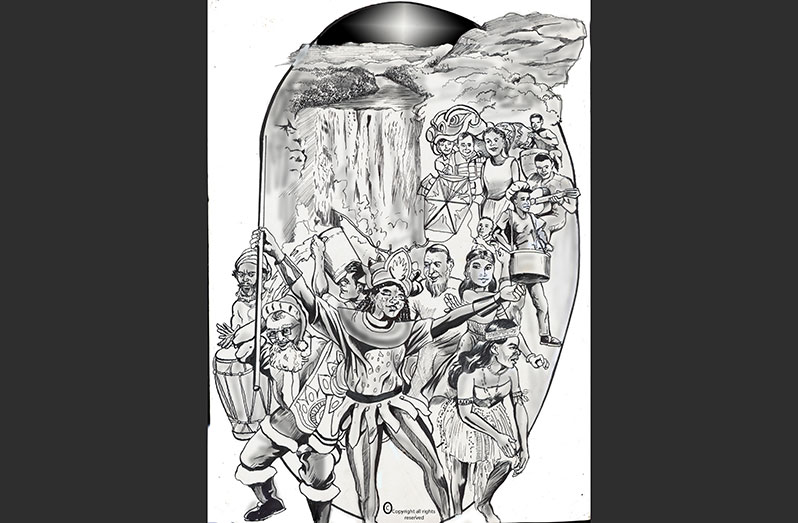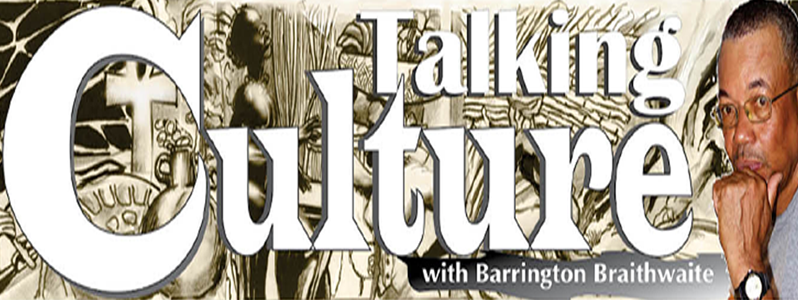– The answer lies in what your senses are awakened to…
THE new world, in our case, the Americas and the Caribbean, did not evolve through peaceful migrations and collaborative engagements but by colonisation, slavery, genocide, and rebellion. Human chemistry struggled with mythical complexes, began to evolve from the very 16th century. Concessions and collaborations commenced, belief systems were enforced to extinguish what was before while quietly adopting aspects of the very condemned Cultural beliefs that were endemic with the colonised and enslaved. By the 18th century, much of what everyone was eating was from the enslaved and the colonised. Barbados, Nevis, Antigua and Montserrat were first settled by indentured and banished Royalists that Oliver Cromwell forced upon the island. The Africans that out populated the European Royalists, that included the European indentured and kidnapped-enslaved population, began in the 1630s when the island economy shifted to sugar plantations and African slavery began. This outlines the reason why, most likely, many Barbadians migrated to Demerara during the later-1700s and after, because the European Bajans had grabbed the core of opportunities available. See- “THE JUMBIES PLAYING GROUND” by Robert Wyndham Nichols. Unlike Guyana, when the Dutch Jews arrived with Africans in 1616-20s – the foundation of (one “Gromweagle” Kijk over al) we are unsure whether those first Africans were enslaved. However, by the time the plantations were established on Bartica, there were clear records of an African and Amerindian Slave population. Guyanese history leading to the 1840 to post-1900s is still not common knowledge to the population, and gaps are needed to be as best to be clarified towards more of an Anthropological understanding rather than just a historical almanac dating of events; however, it is this process of human interactions that would lead to the creation of the Colonist-Colonised and counter- colonising culture, that defines the ‘Creole.’
What is fundamental is that ‘Creole’ took from its past to shape its present and retained a distinct interpretation of the new self, defining self through its evolution with little looking over the shoulder for authority from its past centres and spheres for permission, they crafted using historical memory innate spirituality and coupled with their joint Amerindian, African and European influences and the Christendom that had colonised the European, and in turn, the European had recolonised as an interpretation of his new self. This had come into being, by emancipation; with indentureship, and a similar process of conflicts, rejections, adaptations occurred, most merged with the common plural culture, while a portion resisted. Yet, when the dice is thrown, the example of the advantages of liberation shifted prejudiced rules aside as with the temerity of the French planters of San Domingo who sided with Toussaint towards casting off the restrictions of trade placed upon them by France. They started trading with the new America, perceiving themselves as part of a new dispensation, at least in that area.
 Examples can be drawn from across the Americas (Caribbean), even where racism is still an object in existence, but the fading context of once racist mythologies is less a substantial argument because the racial conflicts of the Americas revolved around the mythological Christian justification for slavery, genocide and pillage. It must be understood that within the Creole consciousness lie opposing human factors, namely ‘The self-loathing colonial and the Yard fowl Brigga Bobby.’ The guilt of WW2 has watered-down the race supremacy concept, at least in the ‘West’ though not eliminating racism in veiled practices. The principle reason can be traced to the archaeology, phenotypical disposition within the geographical locations of the Biblical story, it is rooted in Africa, thus, be it a fabrication or not, as is sometimes argued, it is still an adaptation to ‘post Moorish’ European ‘Coherence.’ And like the Hebrew text, traced to Pharaonic Khemet. Thus, the ‘Big Bang’ of the evolution of the volatile formula that delivered ‘The Creole.’
Examples can be drawn from across the Americas (Caribbean), even where racism is still an object in existence, but the fading context of once racist mythologies is less a substantial argument because the racial conflicts of the Americas revolved around the mythological Christian justification for slavery, genocide and pillage. It must be understood that within the Creole consciousness lie opposing human factors, namely ‘The self-loathing colonial and the Yard fowl Brigga Bobby.’ The guilt of WW2 has watered-down the race supremacy concept, at least in the ‘West’ though not eliminating racism in veiled practices. The principle reason can be traced to the archaeology, phenotypical disposition within the geographical locations of the Biblical story, it is rooted in Africa, thus, be it a fabrication or not, as is sometimes argued, it is still an adaptation to ‘post Moorish’ European ‘Coherence.’ And like the Hebrew text, traced to Pharaonic Khemet. Thus, the ‘Big Bang’ of the evolution of the volatile formula that delivered ‘The Creole.’
The concept of identity is rooted in the difficult reality of awakening, for many, to recognise ‘all of what’ contributed to what exists, an ample example can be found in the reference I had used before, from the book ’THE STORY OF GEORGETOWN’ By James Rodway-In 1811 a Panorama of Stabroek was opened on the site of the present Water Works, Mr Bryant, portrait and scene painter, was the parent of the work, “Alone he did it,” the only instance of the kind ever known where an individual has undertaken a task of such a nature without any assistance, except the mere automation help of a slave.” The fact is Joshua Bryant did not say this; again, nothing that Bryant painted did not require out of any assistant the application of expert talent. It is for we who are descended from that sordid history to, with clear recognition, join with enlightened minds to correct the fictions of the past, whether told by a bigoted scribe, or read into accepting, the fictitious text of a ridiculous philosophy, by a perceived respected seer.
The onus rests with the individual, his/her courage to challenge the differences of a perceived identity. If it has worked for those whom this identity envelopes, you cannot change it, or deceive it. For example, I don’t eat pork, shrimp, nor unscaled fish, I will not partake in the attempt to deceive because I can’t, it will upset my stomach and cause immediate convulsions, and I will be revealed. What we are today is a plural culture that will resist impositions that are singularly divisive in construct because this has been the nature of Creole culture from its inception.
In closing, what constitutes the ‘Creole Identity’ is that it has contrived its own folk, National and popular music, its own ethos, reaching into the pool of vast experiences. Identity is and was, a process of evolution, of pain, struggle and laughter at the ridiculous, with a language that is a combination of many, but it is understood in its poetry and literature. It has produced men and women of excellence, and its own challenges of ‘Colonial Jumbies’ within and without, it is the story of the New World, the struggle of its underdogs, varied on its diverse platforms, but unique in its common nature and identity.



.jpg)








